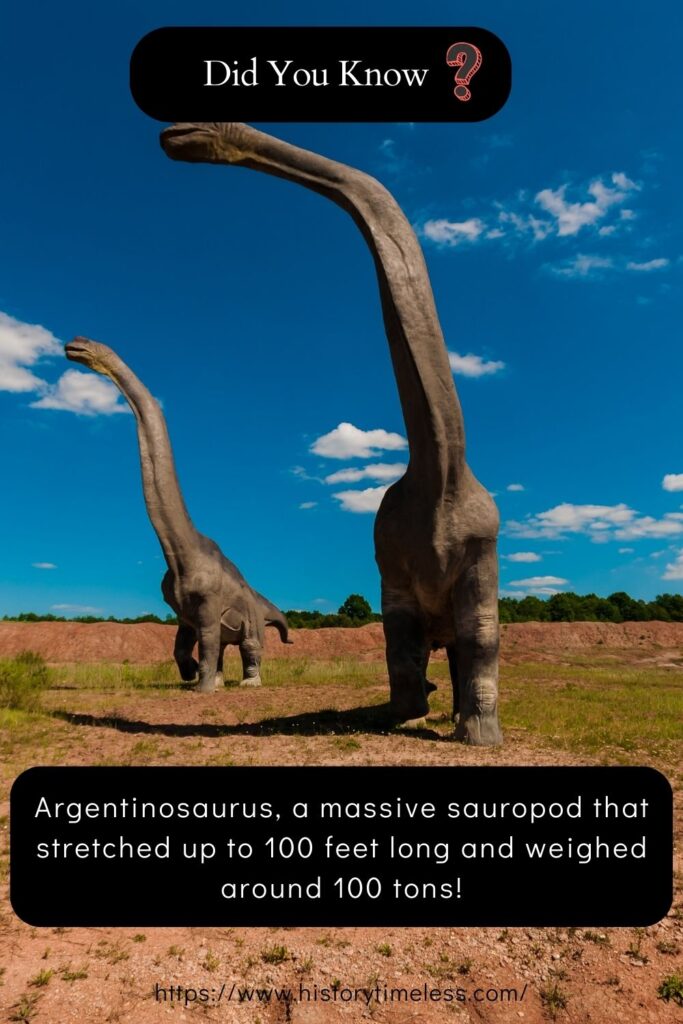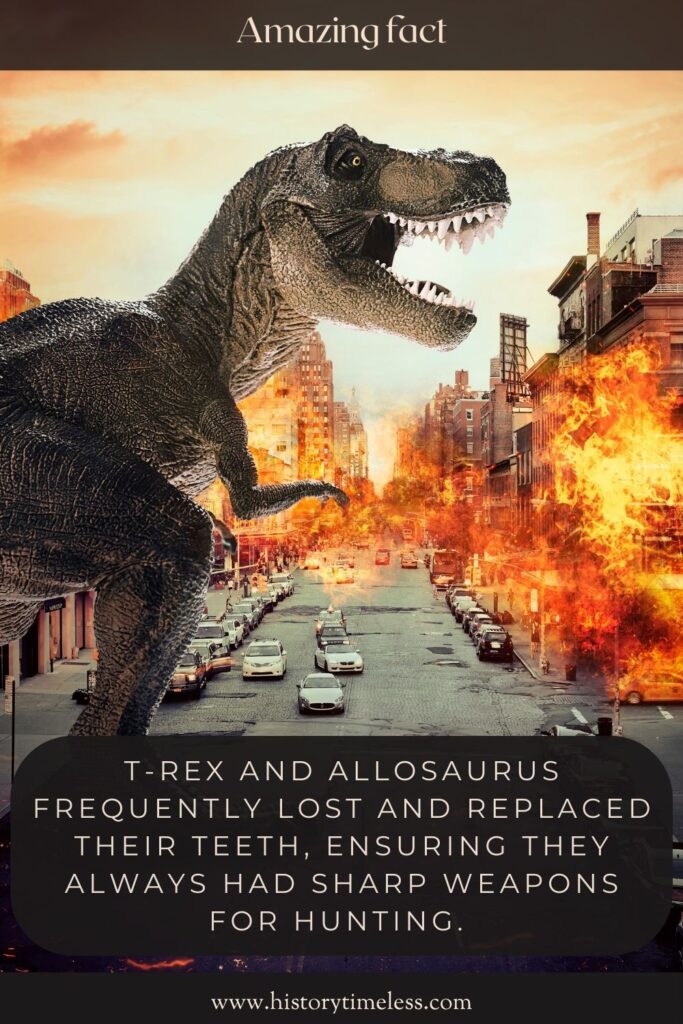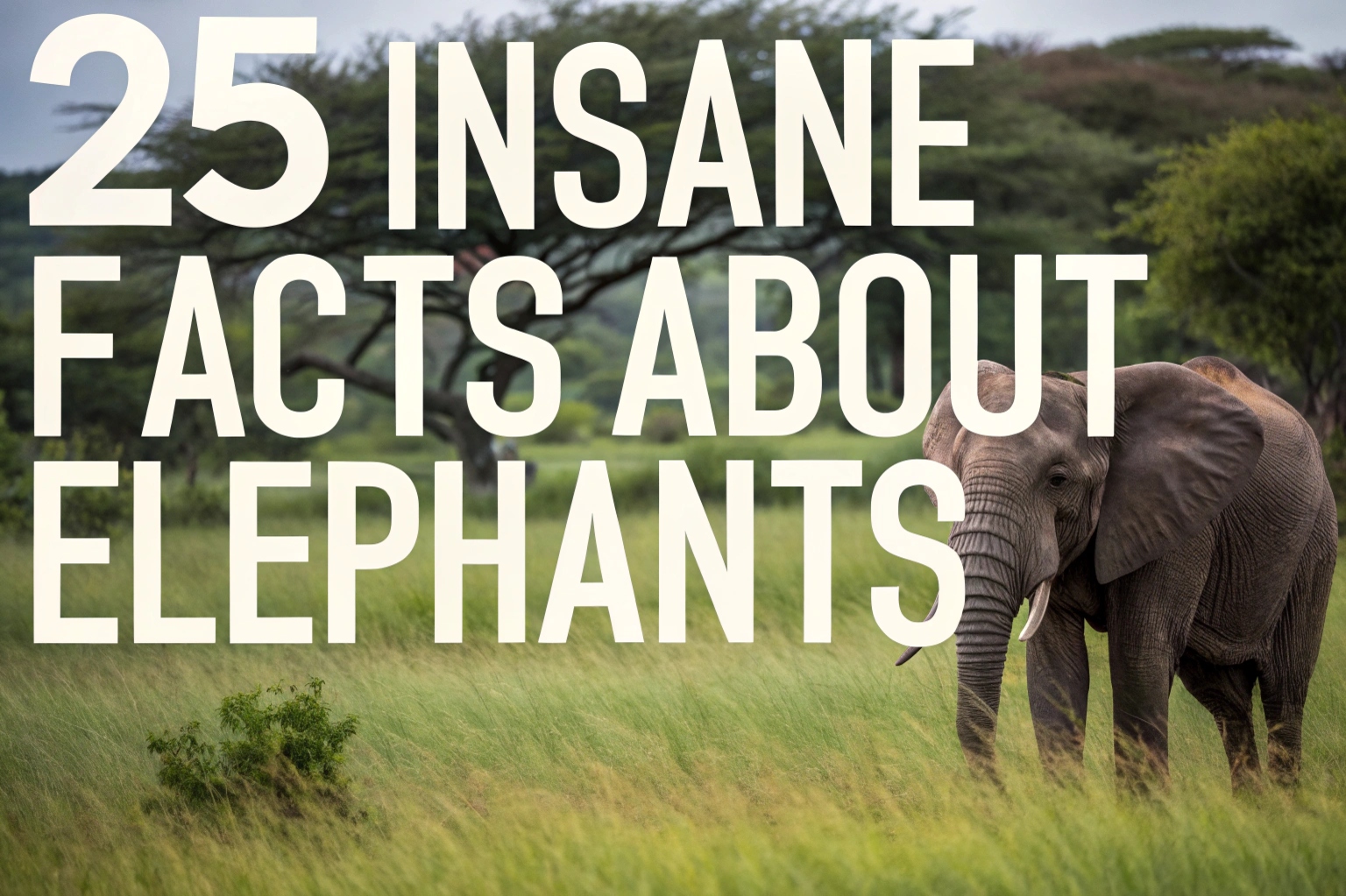Dinosaurs ruled the Earth for over 165 million years, leaving behind fossils that continue to amaze us today. While you might know about the mighty T-Rex or the towering Brachiosaurus, there are countless surprising details about these prehistoric creatures that many people overlook.
From their unexpected colors to their strange eating habits, dinosaurs were more fascinating than we ever imagined.
In this post, we’ll explore 28 unique and eye-opening facts about dinosaurs that will make you see these ancient giants in a whole new light!
1. Some dinosaurs had feathers, not scales
Not all dinosaurs were covered in rough, reptilian scales—many actually had feathers! Paleontologists have discovered fossils with feather imprints, particularly in theropod dinosaurs like Velociraptors and Microraptors.
These feathers weren’t just for flight; some helped with insulation, display, or even camouflage. This discovery has reshaped how we view dinosaurs, linking them closely to modern birds.
In fact, birds are now considered direct descendants of dinosaurs, meaning that when you see a sparrow or an eagle, you’re looking at a distant relative of the mighty T-Rex!
2. The largest dinosaur was as long as a blue whale
The title of the largest dinosaur goes to the Argentinosaurus, a massive sauropod that stretched up to 100 feet long and weighed around 100 tons! That’s roughly the same length as a blue whale, the largest animal alive today.

Fossil evidence suggests these giants roamed South America during the Cretaceous period. Despite their enormous size, Argentinosaurus and other sauropods were gentle herbivores, spending their lives grazing on vast forests.
Scientists believe their huge size helped deter predators and allowed them to reach high tree branches for food.
3. The T-Rex had an incredible sense of smell
Tyrannosaurus rex wasn’t just a fearsome predator because of its size and strength—it also had one of the best noses in the dinosaur kingdom! Fossil studies show that T-Rex had an unusually large olfactory bulb, the part of the brain responsible for smell.
This allowed it to detect prey from miles away, track wounded animals, and even sniff out carcasses. Some scientists believe this keen sense of smell gave T-Rex an edge as both a hunter and scavenger, ensuring it rarely went hungry.
4. Dinosaurs lived on every continent, including Antarctica
Most people imagine dinosaurs roaming lush jungles and vast deserts, but they actually lived on every continent—including Antarctica! Fossil evidence reveals that dinosaurs thrived even in colder regions.
During the Mesozoic Era, the world’s climate was much warmer, and Antarctica was covered in forests rather than ice. Dinosaurs like the Cryolophosaurus, a meat-eating theropod, adapted to these conditions.
This discovery shows just how diverse and adaptable dinosaurs were, surviving in environments we wouldn’t normally associate with them.
5. Some dinosaurs were as small as chickens
While we often think of dinosaurs as towering giants, some were shockingly tiny! The Microraptor, for example, was about the size of a modern chicken and had feathered wings.
Another small dinosaur, the Compsognathus, was no bigger than a turkey and likely darted through ancient forests hunting insects and small lizards.
These miniature dinosaurs prove that size wasn’t everything in the prehistoric world—speed, agility, and intelligence also played crucial roles in survival.
6. Many dinosaurs were social and lived in herds
Dinosaurs weren’t all solitary creatures—many lived in herds, just like elephants and bison today. Fossilized footprints and bone beds suggest that species like Triceratops and Hadrosaurs traveled in large groups for protection and social interaction.
Some even cared for their young, much like modern birds and mammals. This herd behavior likely helped dinosaurs fend off predators and find food more efficiently, showcasing the complex social structures that existed in prehistoric times.
7. The Stegosaurus had a brain the size of a walnut
Despite its massive body, Stegosaurus had a surprisingly tiny brain—about the size of a walnut! This armored dinosaur, famous for its large back plates and spiked tail, weighed several tons but had one of the smallest brain-to-body ratios among dinosaurs.
However, that doesn’t necessarily mean Stegosaurus was unintelligent. Some scientists believe its small brain was enough for its simple, plant-eating lifestyle. It likely relied more on instincts and reflexes than problem-solving skills to survive.
8. Dinosaurs didn’t roar like in the movies
Forget the earth-shaking roars from Jurassic Park—real dinosaurs probably sounded very different! Paleontologists believe that instead of roaring, dinosaurs made deep, low-frequency sounds similar to crocodiles or even birds.
Some species may have produced hissing, cooing, or booming noises using air sacs in their throats. This changes how we imagine dinosaurs communicating, as they may have used these sounds to call to mates, warn off rivals, or coordinate within a herd.
9. Dinosaurs laid eggs, and some even cared for them
Like modern reptiles and birds, all dinosaurs laid eggs—but some went a step further and cared for their young! Fossilized nests and embryos show that certain species, such as the Maiasaura, built nesting sites and protected their eggs until they hatched.
These dinosaurs likely fed and watched over their babies, increasing their chances of survival. This behavior suggests that dinosaurs were more nurturing than we once believed, with some species displaying parental instincts similar to modern birds.
10. The asteroid impact wasn’t the only reason dinosaurs disappeared
The mass extinction that wiped out the dinosaurs 66 million years ago was likely caused by a massive asteroid impact, but that wasn’t the only factor. Scientists believe volcanic eruptions, climate change, and shifting sea levels also played major roles in their downfall.
The asteroid strike in what is now Mexico triggered massive wildfires, blocked sunlight with dust clouds, and caused drastic temperature drops.
These environmental changes would have been catastrophic, making it nearly impossible for dinosaurs to survive. While the asteroid was the final blow, their decline was already underway.
11. Some dinosaurs could run faster than an Olympic sprinter
While many dinosaurs were slow-moving giants, some species were incredibly fast. The Velociraptor, for instance, could run at speeds of up to 40 mph (64 km/h), making it one of the fastest dinosaurs.
Even larger dinosaurs like the Ornithomimus, which resembled an ostrich, could reach speeds of up to 50 mph!
These speeds helped them outrun predators or chase down prey. For comparison, the fastest human sprinters today can reach about 27 mph. If you were being chased by one of these dinosaurs, you wouldn’t stand a chance!
12. Some dinosaurs had built-in armor for protection
Dinosaurs weren’t just massive and fast—some also had built-in body armor to protect themselves from predators. Ankylosaurus, for example, was covered in thick, bony plates and had a massive club-like tail strong enough to break bones.
Triceratops had a large frill and three sharp horns, which were likely used for both defense and combat. These armored dinosaurs acted like prehistoric tanks, using their natural defenses to survive in a dangerous world filled with hungry predators.
13. Dinosaurs could regrow lost teeth throughout their lives
Unlike humans, who only get two sets of teeth, many dinosaurs continuously grew new teeth throughout their lifetimes. Carnivorous dinosaurs like T-Rex and Allosaurus frequently lost and replaced their teeth, ensuring they always had sharp weapons for hunting.

Some species, like the Hadrosaurs, had hundreds of teeth at once and could replace them as they wore down from chewing tough plants.
This incredible adaptation helped dinosaurs maintain their ability to eat efficiently, no matter how much wear and tear their teeth experienced.
14. Some dinosaurs had long tails for balance and communication
Dinosaur tails weren’t just for show—they played a crucial role in balance, defense, and even communication. Raptors, for example, used their long, stiff tails to help them make quick turns while running at high speeds.
Sauropods, the long-necked dinosaurs, may have used their massive tails like a whip to fend off predators.
Some dinosaurs even wagged or positioned their tails as a way to signal others in their group. This shows how tail adaptations helped dinosaurs survive and interact with their environment.
15. Dinosaurs had hollow bones, just like modern birds
Many dinosaurs, especially theropods like T-Rex and Velociraptor, had hollow bones. While this might sound fragile, it actually made them stronger and lighter, allowing them to move quickly and efficiently.
This feature is also found in modern birds, helping them stay light enough for flight. The connection between hollow bones in dinosaurs and birds further strengthens the theory that birds evolved directly from theropod dinosaurs.
Next time you see a pigeon or a hawk, remember—you’re looking at the evolutionary legacy of dinosaurs!
16. Some dinosaurs had strange head crests that made sounds
Many dinosaurs had unique crests and head structures, but these weren’t just for decoration. Some, like the Parasaurolophus, had hollow, tube-like crests that could produce loud, trumpet-like sounds.
Scientists believe these sounds were used for communication, whether to warn of danger, attract mates, or stay in touch with the herd.
These crests worked like built-in musical instruments, allowing dinosaurs to “speak” to one another in ways we are still trying to understand.
17. The smallest dinosaur egg was only a few inches long
While some dinosaur eggs were massive, measuring up to two feet in diameter, others were surprisingly tiny. Some of the smallest dinosaur eggs ever discovered were just a few inches long, about the size of a quail egg.
These eggs likely belonged to small theropods or bird-like dinosaurs. The discovery of tiny dinosaur eggs shows the incredible size variation among dinosaurs, from towering giants to pint-sized creatures that could fit in the palm of your hand.
18. Some dinosaurs might have been warm-blooded
For years, scientists believed that dinosaurs were cold-blooded like modern reptiles, but recent research suggests some may have been warm-blooded.
Warm-blooded creatures generate their own heat, allowing them to stay active regardless of the outside temperature. Studies on dinosaur bones show that some species, particularly theropods, had high metabolic rates, similar to mammals and birds.
This means dinosaurs may have been more active, energetic, and capable of surviving in a wider range of climates than previously thought.
19. Dinosaurs and early mammals coexisted for millions of years
Dinosaurs weren’t the only creatures roaming the Earth during the Mesozoic Era—early mammals were also present! While they were much smaller and less dominant, mammals lived alongside dinosaurs for millions of years.
Most early mammals were tiny, nocturnal creatures that avoided large predators by burrowing and scavenging at night.
It wasn’t until dinosaurs went extinct that mammals had the opportunity to evolve into the dominant land animals we see today, eventually leading to primates—and, much later, humans!
20. Some dinosaurs could swim and hunted in water
While most dinosaurs were land-dwellers, some were excellent swimmers. The Spinosaurus, for example, is believed to be the first known semi-aquatic dinosaur.
Fossil evidence suggests it had webbed feet, dense bones for buoyancy control, and a long, crocodile-like snout perfect for catching fish.
Other dinosaurs, like the Baryonyx, had similar adaptations that allowed them to hunt near or in the water. This challenges the idea that all dinosaurs were strictly land-based and proves that some thrived in diverse environments.
21. Some dinosaurs swallowed rocks to help them digest food
Since many plant-eating dinosaurs had no way to chew tough vegetation, they evolved a clever solution—swallowing stones! These stones, known as gastroliths, helped grind up food inside their stomachs, much like modern birds such as ostriches do today.
Fossilized remains of dinosaurs like Brachiosaurus and Seismosaurus have been found with smooth, rounded stones in their stomach areas, providing clear evidence of this digestive trick.
This adaptation helped herbivorous dinosaurs process fibrous plants efficiently, giving them an evolutionary edge.
22. The first dinosaur fossil was discovered over 300 years ago
While dinosaurs roamed the Earth millions of years ago, the first recorded dinosaur fossil discovery happened in the 1600s.
In England, a scientist named Robert Plot found a large fossilized bone and believed it belonged to a giant human.
It wasn’t until the 19th century that scientists realized these massive bones belonged to an entirely different group of creatures—dinosaurs! The official term “dinosaur,” meaning “terrible lizard,” was later coined by paleontologist Richard Owen in 1842.
23. Dinosaurs had some of the strongest bites in history
When it comes to bite force, the T-Rex takes the crown. Studies suggest that its bite could exert up to 12,800 pounds of pressure—enough to crush a car!
This makes T-Rex one of the strongest biters in history, surpassing even modern crocodiles and great white sharks. With its powerful jaws, serrated teeth, and bone-crushing abilities, T-Rex was capable of devouring large prey and even crushing the bones of its meals to extract nutritious marrow.
24. Some dinosaurs had night vision and hunted in the dark
Not all dinosaurs were daytime hunters—some species had excellent night vision, allowing them to thrive in the dark. Scientists studying fossilized dinosaur skulls have found evidence of large eye sockets and specialized structures indicating an ability to see well in low light.
Troodon, a small but intelligent dinosaur, is believed to have been nocturnal, using its sharp eyesight and keen senses to hunt small prey at night.
This suggests that the prehistoric world was active 24/7, with different dinosaurs ruling the day and night.
25. The longest dinosaur name has 23 letters
Some dinosaur names are a mouthful, but none are longer than Micropachycephalosaurus. With 23 letters, this tongue-twisting name belongs to a small, herbivorous dinosaur found in China.
Its name means “tiny thick-headed lizard” due to its small size and thick skull. While its name is difficult to pronounce, Micropachycephalosaurus was actually one of the smallest members of the pachycephalosaur family, which includes other dome-headed dinosaurs.
26. Some dinosaurs could live over 100 years
Dinosaurs came in all shapes and sizes, and their lifespans varied greatly. While smaller dinosaurs likely lived only a few decades, massive species like the Apatosaurus and Brachiosaurus may have lived for over 100 years!
Scientists estimate dinosaur lifespans by studying growth rings in fossilized bones, similar to how tree rings reveal a tree’s age.
The slow growth and enormous size of some dinosaurs suggest they could have lived longer than any land animals today.
27. Dinosaurs inspired myths about dragons and giants
Before scientists understood dinosaurs, ancient cultures may have mistaken their fossils for the remains of mythical creatures. In China, large dinosaur bones were often believed to be dragon bones, inspiring many legends.
In medieval Europe, massive bones found in caves were thought to belong to giants or monsters. It wasn’t until paleontology developed as a science that people realized these fossils belonged to a long-extinct group of creatures—dinosaurs!
28. Not all dinosaurs went extinct—some evolved into birds
While the asteroid impact wiped out most dinosaurs, some survived and evolved into birds. The connection between dinosaurs and birds is supported by fossil evidence showing feathered dinosaurs with features similar to modern birds.
Creatures like Archaeopteryx had both reptilian traits (teeth and clawed fingers) and bird-like features (feathers and lightweight bones).
Today, every bird you see—from pigeons to eagles—is a living descendant of the dinosaurs, proving that their legacy is still very much alive.
Be amazed by these hidden gems:
25 Amazing Science Facts That Will Blow Your Mind!
25 Shocking Rh-Negative Blood Facts You Need to See!
20+ Insane Facts About Animals That Defy Belief!
15+ Interesting World Facts: Say ‘Wow’ to These Discoveries!





